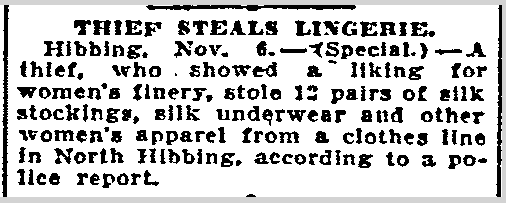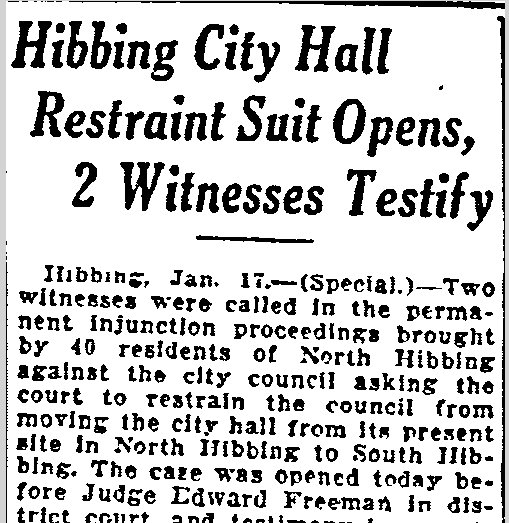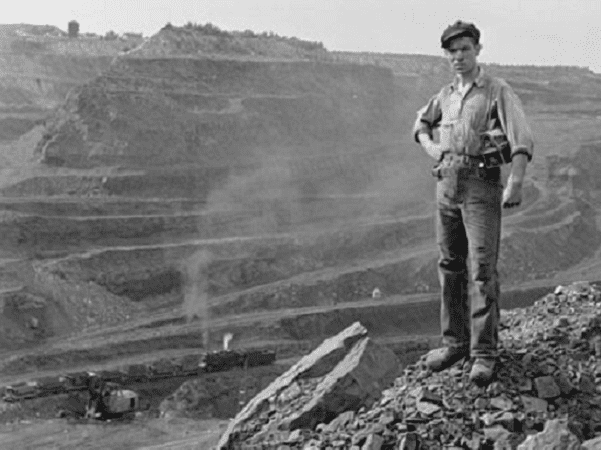Introduction: In this article, Scott Phillips searches online newspapers to solve the mystery of why/how his ancestor’s hometown of North Hibbing, Minnesota, disappeared. Scott is a genealogical historian and owner of Onward To Our Past® genealogy services.
We all know how challenging it can be to find elusive ancestors for our family history and genealogy work. However, recently I had an almost opposite situation. I knew my ancestors and family members, but their hometown was gone! So I decided to give GenealogyBank.com a try to see if their newspaper archives might be of help to me.
I had often heard my father-in-law, Carlo (God rest his soul) talk about being born and raised in the town of North Hibbing, Minnesota. He spoke fondly of this community, what a close-knit place it was, and related wonderful stories of being a youth in what seemed like less complicated times. His stories would always end with the statement that the whole town was gone now. I was remiss in not asking how a whole town goes missing, but I never did ask.
GenealogyBank’s Historical Newspaper Archives to the rescue!
I used GenealogyBank’s Advanced Search function and entered “North Hibbing.” I was thrilled when the search results page came back with 73 entries for the “missing” hometown.
As I scanned the newspaper articles, I was treated to snippets of life in North Hibbing. A billiard hall raid (complete with a signal system to alert the hall’s owners), meetings of The Sons of Italy Italian Lodge, the beginnings of the Greyhound Bus company—which started with a seven-passenger Hupmobile running in North Hibbing, and even a fellow who reportedly brought in his 49th and 50th wolf skins to collect the bounty.
I even learned about the North Hibbing lingerie thief!

Then I hit pay dirt with another article from the Duluth News Tribune. This article explained that some 40 residents of North Hibbing were suing to keep the city from moving the City Hall out of North Hibbing.

Odd, I thought—who moves a whole City Hall? So I searched further.
The next article told much more of the story. I learned that the residents’ lawsuit made it all the way to the United States Supreme Court. This article, along with others, explained to me that the Oliver Mining Company owned the very valuable mineral rights under the city of North Hibbing. That was why the city agreed to move the City Hall, to make way for a mine.
In their lawsuit, the residents argued that it was unlawful for Hibbing to turn public property over to the mining company—but they lost their case, City Hall was moved, and the mining company got to work.
The railroad then abandoned the North Hibbing line, and the city began to disappear. Quickly everyone had to sell their homes and relocate. Not long after, the city of North Hibbing vanished to become a new open-pit iron mine feeding the burgeoning steel mills of Cleveland, Ohio, and Pittsburgh, Pennsylvania. Then, as Carlo used to say, the entire town was simply gone.
So now I have a much more complete understanding of the missing town of North Hibbing and it has added greatly to our family history.
My next stop? Back to GenealogyBank.com so that I can try and find out what transpired in the old neighborhoods of my Czech ancestors in Cleveland, Ohio. All I know now is that those neighborhoods are six lanes of Interstate concrete. I wonder if my Czech ancestors fought the changes like the residents did in North Hibbing?
